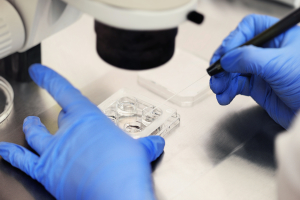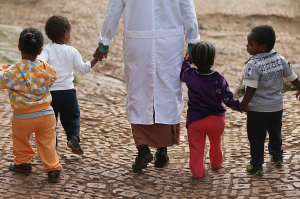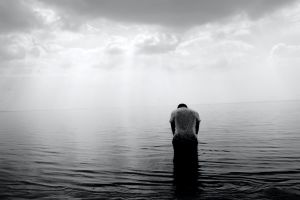The place of Jesus’ baptism could disappear

Correction appended
About one million Christian pilgrims, every year, come from all over the world to be baptized in the Jordan River. At the baptism site called ‘Qaser el Yehud’ on the West Bank, and ‘Al-Maghtas’ on the Jordanian east side of this holy river, Christian tradition teaches that John the Baptist baptized Jesus after which the Holy Spirit descended on Jesus.
Today, the Jordan River would not be recognizable to John the Baptist or Jesus.
When Jesus was baptized, this river was clean, fast-flowing and over a hundred yards wide. Throughout the centuries, the diaries of Christian pilgrims even expressed concern of drowning in the Jordan, should they be carried away by its strong waters. When U.S. Admiral William Lynch organized an expedition down the Jordan in 1848, he recorded in his diary the dangers of navigation — a waterfall had destroyed one of the four boats on his journey.
Today a hamster wheel would hardly turn in what is left of this river that now barely connects the Sea of Galilee and the Dead Sea. The river is barely four yards wide or less, and desperately polluted.
Over the last 50 years, much due to the Arab / Israeli conflict, 95 percent of the fresh water that used to flow down the river has been diverted by Israel, Syria and Jordan. The river border is mined and fenced, and rather than fresh water flowing, a combination of Israeli, Jordanian and Palestinian raw or poorly treated sewage, fishpond waste, agricultural return flow and diverted saline springs, are what feed what is left of the once Mighty River Jordan.
Since 2005, EcoPeace Middle East, together with local residents and mayors, have led the call to rehabilitate the river, with success. Religious leaders representing Judaism, Christianity and Islam joined the effort, signing on to a new Jordan River Covenant that calls for the river’s rehabilitation. Efforts have been further assisted by a 2007 resolution unanimously passed in the U.S. Senate, calling on Israelis, Palestinian and Jordanians to work together towards river rehabilitation.
Despite continuing regional conflict, inspiring progress is being achieved. Over $100 million has been invested in the building of new sanitation infrastructure to remove some of the river’s sewage. The Israel Water Authority started releasing clean water into the river from the Sea of Galilee in 2014, the first time in 49 years. With European Union support, the first ever master plan for the river and the valley was prepared, uniquely bringing together Israeli, Palestinian and Jordanian ministerial level participants. Under their peace treaty arrangements, Israel and Jordan even created a river rehabilitation working group.
However, all of this regional cooperation related to the Jordan River has come to a complete and sudden halt following the announcement of the ‘Deal of the Century’ by the U.S. President. With broad support from the government of Israel, this deal proposes that Israel unilaterally annex the Jordan Valley areas of the West Bank to become part of Israel, despite the vocal objections made by the Jordanian King and the Palestinian President.
Some might argue that annexation would enable Israel to rehabilitate the Jordan River on its own. With the Jordan River as the border, however, all actions on the west side by Israel, are worthless if not coordinated with the Kingdom of Jordan on the east side. Further, over 60,000 Palestinians live in the Jordan Valley on the west side and irrespective of any new political lines drawn, their cooperation on water and sanitation issues remain a prerequisite for river rehabilitation.
No less important, the vast majority of Israel’s security experts, including the Institute for National Security Studies, Israel’s leading security think tank, all believe that unilateral annexation of the Jordan Valley would actually harm Israel’s security by weakening Peace Treaty arrangements between Israel and Jordan.
Cooperation on both sides of the Jordan River is the only way forward, and the only way for millions of Christians to be baptized in renewed, clean and healthy Jordan River waters, where Jesus once stood.
Correction: May 18, 2020:
An earlier version of this op-ed incorrectly stated that Qaser el Yehud is located in Israel. It is located in the West Bank.
Gidon Bromberg, Yana Abu Taleb, Nada Majdalani are co-directors, Israeli, Jordanian and Palestinian, of EcoPeace Middle East, a unique regional organization promoting cooperative efforts to protect the shared environmental heritage of the Holy Land.




























